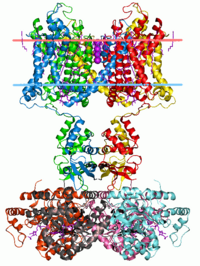
The Polysite Pharmacology of TREK K2P Channels.
Sign Up to like & getrecommendations! Published in 2021 at "Advances in experimental medicine and biology"
DOI: 10.1007/978-981-16-4254-8_4
Abstract: K2P (KCNK) potassium channels form "background" or "leak" currents that have critical roles in cell excitability control in the brain, cardiovascular system, and somatosensory neurons. Similar to many ion channel families, studies of K2Ps have… read more here.
Keywords: channel; function; trek; polysite pharmacology ... See more keywords

Structural Insights into the Mechanisms and Pharmacology of K2P Potassium Channels
Sign Up to like & getrecommendations! Published in 2021 at "Journal of molecular biology"
DOI: 10.1016/j.jmb.2021.166995
Abstract: Leak currents, defined as voltage and time independent flows of ions across cell membranes, are central to cellular electrical excitability control. The K2P (KCNK) potassium channel class comprises an ion channel family that produces potassium… read more here.
Keywords: potassium; k2p; structural insights; channel ... See more keywords

Expression and localisation of two-pore domain (K2P) background leak potassium ion channels in the mouse retina
Sign Up to like & getrecommendations! Published in 2017 at "Scientific Reports"
DOI: 10.1038/srep46085
Abstract: Two-pore domain (K2P) potassium channels perform essential roles in neuronal function. These channels produce background leak type potassium currents that act to regulate resting membrane potential and levels of cellular excitability. 15 different K2P channels… read more here.
Keywords: potassium; k2p; k2p channels; two pore ... See more keywords

A gating mechanism of K2P channels by their selectivity filter
Sign Up to like & getrecommendations! Published in 2022 at "Journal of Molecular Cell Biology"
DOI: 10.1093/jmcb/mjac018
Abstract: Cellular excitability is determined by the flowof different ions across the cellmembrane, which is in turn controlled by the opening and closing of ion-permeable pores, the ion channels (Hille, 2001). For instance, in neurons, the… read more here.
Keywords: k2p; mechanism k2p; gating mechanism; membrane potential ... See more keywords